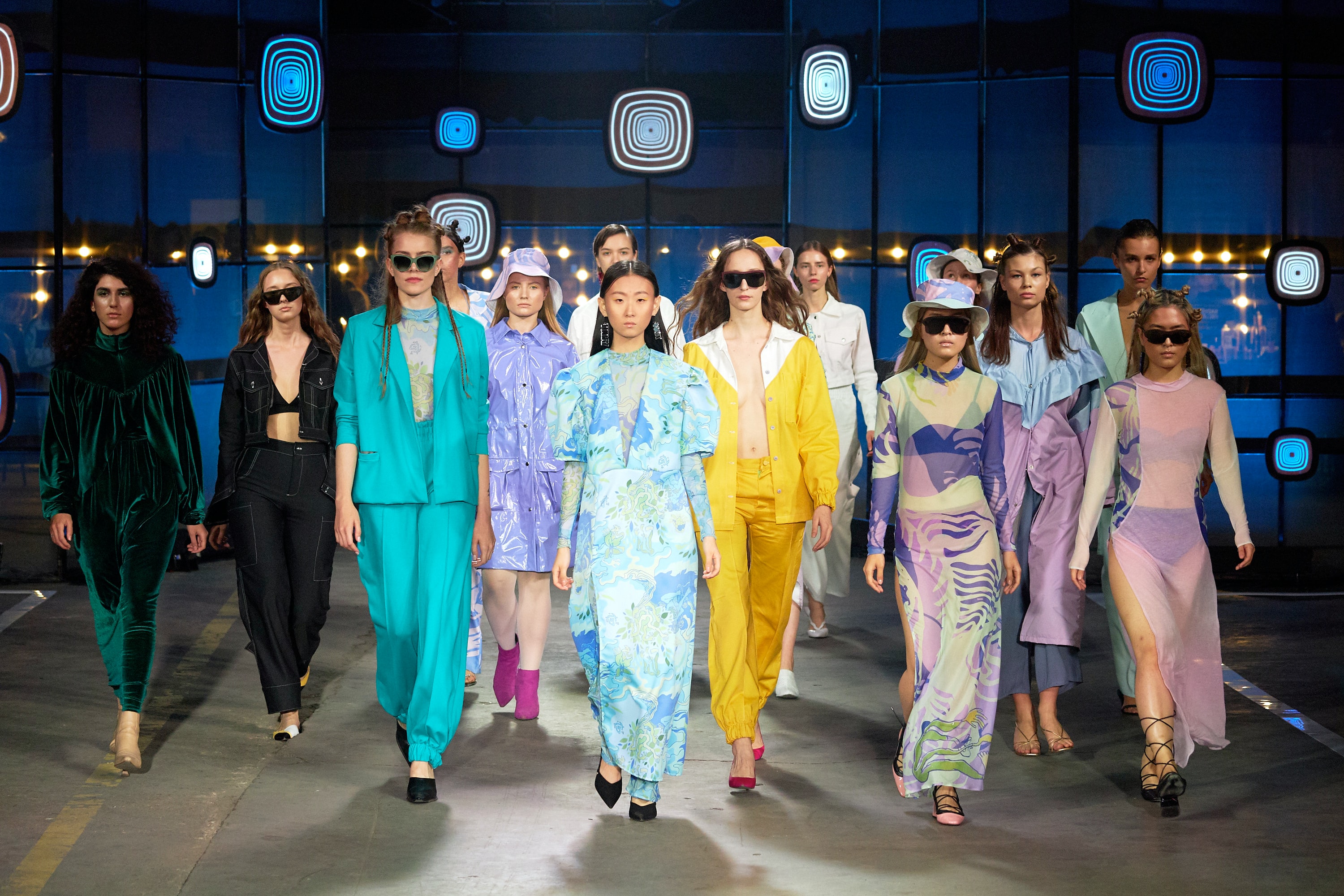The COVID-19 pandemic has been challenging for the fashion industry. As Forbes pointed out,
“The fashion industry has been hit hard by the effects of the Coronavirus pandemic; since there was a shift in consumer sentiment, people now tend to focus on buying necessary items.” The publisher continued, saying, “Apparel is a necessity, but the fashion industry is very fast-lived, and customers are not as willing to buy the latest product offerings if they have to contend with monetary uncertainty.”
As a result of the pandemic, many fashion retailers have had to shutter their doors or close failing locations. Popular retail giant H&M announced plans to close 250 of its 5,000 stores across the globe in early 2021 and fashion-forward retailer Zara closed 1,000 locations around the same time.
But it isn’t just the world of fashion apparel that’s been challenged. “Fashion” refers to an entire industry—and these kinds of struggles are being felt everywhere. Home decor and furniture store West Elm is shuttering locations in major cities like Reno as well. Popular vegan beauty brand Bite is going out of business altogether after over a decade of business.
Whether it be apparel, home decor, textiles, shoes, makeup furniture, or other trend-driven sectors, marketing is an important way for those in the fashion industry to spark consumer interest and drive sales, but with a tightening budget, they need to identify smart, targeted, and cost-conscious strategies to do so.
One way for fashion brands to counteract the sting of slowed sales is with performance marketing. This article will take a look at what performance marketing means in the world of fashion and why brands should consider this strategy.
What You Should Know About Performance Marketing
You’ve put together a traditional ad campaign—and it’s working. You’re bringing in potential customers. Performance marketing is a cost-efficient, effective way to encourage them to continue to nurture the relationship with them. HubSpot described it well:
“Performance marketing is a commission-based tactic in which advertisers only pay once a user has met a conversion goal. This can be anything from making a purchase to filling out a form on a landing page.”
Traditional ad campaigns are an indispensable way to connect with your target audience. They require careful, thoughtful research to generate momentum and create a great return on investment.
On the other hand, with performance marketing, you only pay when your goals are met. This means you accomplish several things at once:
- There is less risk associated with your campaign
- You have a higher guaranteed return on investment
- There is more control over how much you pay for your campaign
- You build brand recognition
- There are trackable metrics to see how your campaign is doing
For example, through some social media platforms like LinkedIn or search engines like Google, marketers can focus their efforts on their target audience and only pay for these ads based only on the actions consumers take, like clicking on links, downloading whitepapers or eBooks, signing up for email subscriptions, and more.
Performance marketing can include a range of different digital channels, including:
- Social media advertising
- Sponsored content
- Native advertising
- Affiliate marketing
- Search engine marketing
The Importance of Digital Marketing for the Fashion Industry
There’s so much more to fashion than just apparel. This industry also includes major sectors like home decor and furniture, textiles, shoes, cosmetics, athletic wear, accessories, and more. But what these sectors all have in common is that they are selling the appeal of a particular kind of lifestyle—and that’s where digital marketing and market segmentation make all the difference. In fact, McKinsey’s “The State of Fashion 2022” shared that digital elements will offer one of the fashion industry’s biggest opportunities for growth.
C-suite executives in the world of fashion are seeing lots of room for growth in the digital realm, with 32 percent of these individuals looking to digital avenues, and 11 percent also eyeing consumer engagement.
When it comes to the fashion industry, digital marketing is an indispensable tool to connect with consumers. The Social Science Research Network explained the importance of digital marketing through every element of the fashion industry from the supply chain to product development and retail, stating:
“The role of digital marketing is very important in fashion marketing. Fashion is a global business with a complex structure that operates on many different levels to reach everyone from fashioners to those who just purchase clothing as a necessity of everyday life. Digital mode brings the whole world to the customers’ doorstep in one click.”
Not only is digital marketing measurable and trackable, but as HubSpot shared, “You can focus your efforts on only the prospects most likely to purchase your product or service.” This matters in the fashion industry, where so much of a brand is geared toward connecting with a particular demographic or market segment, including:
- Gender-related segments
- Age-related segments
- Geographic segments
- Behavior and lifestyle-related segments
Digital marketing pairs well with targeting specific market segments, thanks to a wealth of data for each user and strong insights into customer behavior. With digital segmentation, brands can create accurate forecasts and write effective predictive modeling for their campaigns. This gives brands the power to craft highly-targeted, relevant, and specific campaigns that drive higher conversions.
Segmentation can help brands connect with consumers at different points in their life, whether they are interested in certain emerging apparel trends, or redecorating their house in a particular style—so much of this is based on demographics, and segmentation makes that happen. So, if a Gen Z consumer is drawn to the looks of 2000s fashion or planning what items they need for their dorm room as they enter college, or if a Millennial wants to revamp their apartment with a certain shade of pink, segmentation can help fashion brands connect with these customers.
Why Performance Marketing Matters in Fashion Retail
Digital marketing can have a significant impact on fashion brands and retailers, but why is performance marketing such an important digital strategy?
Addressing Industry Pain Points
One of the biggest issues of the online fashion retail industry is cart abandonment when consumers begin the checkout process but never complete it. Performance marketing can help address this issue by launching retargeting marketing campaigns to connect with these consumers. In 2021, the average shopping cart abandonment rate for all industries was 79.8 percent, according to Statista. However, this rate was far higher in the global fashion industry. In 2021, fashion had the third-highest cart abandonment rate of any industry, climbing to 88.57 percent.
Through the use of performance marketing, fashion retailers can re-engage with consumers who may have been previously not ready to buy, using personalized promotions, messaging, social media ads, and more to increase the likelihood of these consumers returning to complete their purchase.
Performance marketing can also help fashion brands re-engage with inactive or absent consumers to inform them about upcoming promotions, offer enticing discounts, or retarget them with personalized ads based on their previous purchases or browsing history.
Maximize the Impact of Major Shopping Days and Large Campaigns
In the world of fashion retail, days like Black Friday and Cyber Monday hold a lot of importance. Performance marketing can amplify the power of a fashion brand’s marketing campaigns to better connect with consumers.
Again, take the example of cart abandonment. Black Friday, November 2021 was successful—especially in the digital realm. Seventy percent of all 2021 Black Friday sales happened online. Compared to sales on the Monday preceding Black Friday, online shopping increased by 38 percent.
But this doesn’t mean that there isn’t room to grow. It seems that fashion brands, in particular, could benefit from performance marketing, since airline and luxury fashion were the two industries with the highest rates of cart abandonment on this day.
Retargeting those who abandoned their cart with engaging, dynamic, motivating content is one-way fashion brands could improve their sales. Another would be to launch a holiday-related promotional email campaign or social media campaign to connect with first-time customers.
Navigating a Changing Fashion Landscape with Performance Marketing
Digital marketing is an ever-evolving industry with trends and fads, inspiration, and changes, much like the fashion industry. While the changes in both of these fields can be a source of inspiration, they can also make the task of connecting with consumers a challenging one.
Performance marketing is a well-suited match for fashion brands and retailers looking to share their message with specific, interested, and segmented audiences without breaking the bank. But this requires industry knowledge of target audiences, thorough knowledge of which channels will be effective with these audiences, and how to craft a winning marketing strategy.
At MBI, navigating changing marketing landscapes is what fuels us. Just as fashion changes with the season, marketing trends come and go. Our experienced marketing strategists are tuned into what’s current in the world of marketing, what’s coming down the road, and what long-term strategies will draw consumers in—including performance marketing.
To learn more about how we can curate a media plan that makes sense for you, connect with our team of strategists today!

